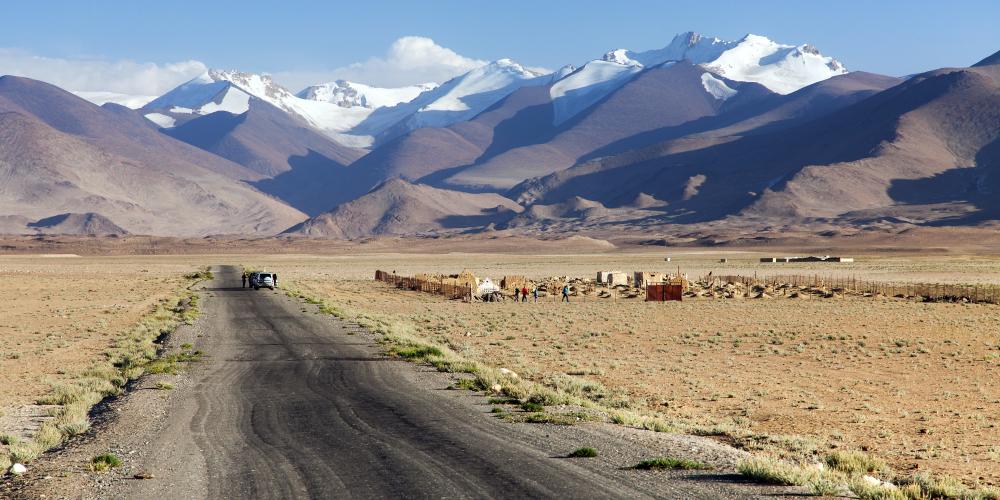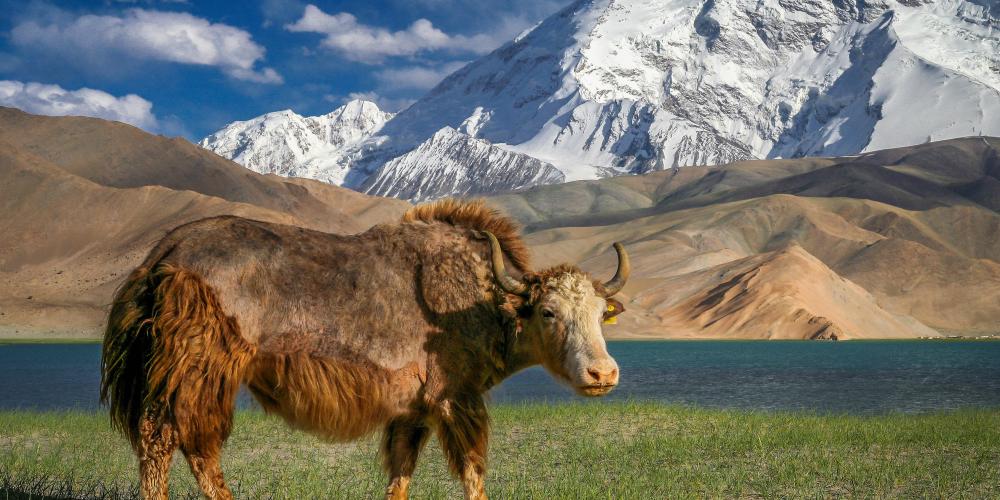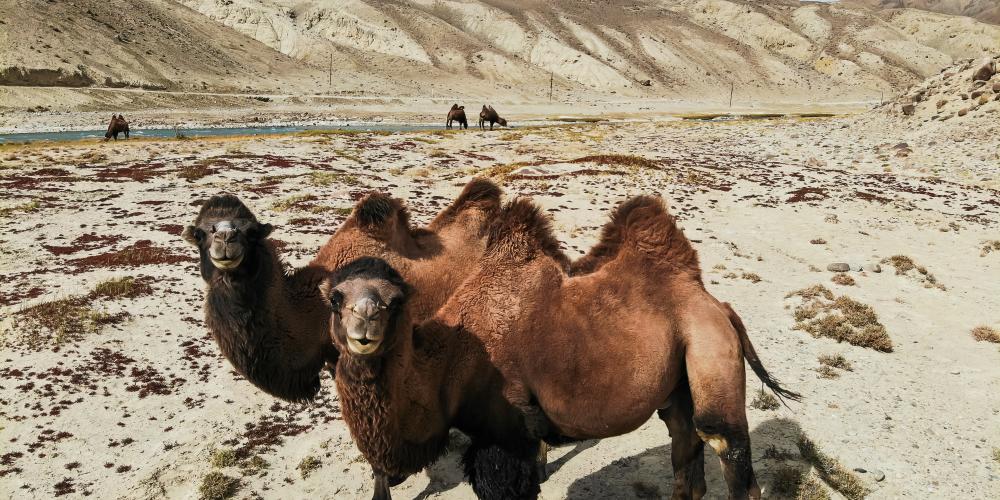The Pamir Highway: From the Tien Shan to the High Pamirs


Days 1-4: Bishkek (Kyrgyzstan), Chon-Kemin, Son Kul
Start in Kyrgyzstan’s capital, Bishkek, where visits to museums, the city’s main bazaar, and a textile-designer’s workshop serve as an introduction to Kyrgyz culture. Then drive to a traditional village in Chon-Kemin and get immersed in the life of the countryside, sharing meals with locals and taking part in daily rituals. Spend a night in a yurt near alpine Son Kul Lake, surrounded by the towering peaks of the Tien Shan Mountains. Witness a match of kok-boru, an intense sport on horseback originally played by medieval herders.
HIGHLIGHTS
- Bishkek’s State Museum of Fine Arts, featuring Kyrgyz art and handicrafts
- Osh Bazaar, with its fruits, nuts, prepared foods, and brilliant Kyrgyz textiles
- Taking a master class in silk and wool scarf-making
- Climbing to the top of Burana Tower, one of the few remaining Silk Road watchtowers in Kyrgyzstan
- Seeing a yurt raised – a process so distinctive and well engineered that it’s on the UNESCO List of Intangible Cultural Heritage
- A fireside performance of selections from the Epic of Manas, a traditional poem deeply rooted in Kyrgyz culture
- Spending the night on alpine Son Kul Lake, surrounded by lush pastures, grazing animals, and the yurts of nomadic herders
- Watching a match of kok-boru, a team sport on horseback with some similarity to polo

Days 5-7: Naryn, Tash Rabat, Kochkor, Bishkek
Drive up to the mountain town of Naryn, meet a community of Afghan Pamirs who have resettled there, and watch a demonstration of felt-making – a centuries-old craft that’s falling out of common practice. Explore the well-preserved 15th century Tash Rabat caravanserai, a former highland outpost on the Silk Road that’s Central Asia’s largest stone structure. Return to Bishkek, stopping along the way to have lunch with a local family in the little village of Kochkor.
HIGHLIGHTS
- Visiting with a community of Afghan Pamirs; resettled in Kyrgyzstan in 2017, they hold on to their own customs, including traditional dress and song, while assimilating into local life
- Witnessing the dying art of traditional felt-making
- A cooking demonstration of how to prepare beshbarmak, the Kyrgyz national dish, and boorsok, a fragrant, sweet fried bread
- Touring Tash Rabat, a giant stone fortress and Silk Road caravanserai filled with underground passages and secret exits
- Lunch with a local family in Kochkor Village
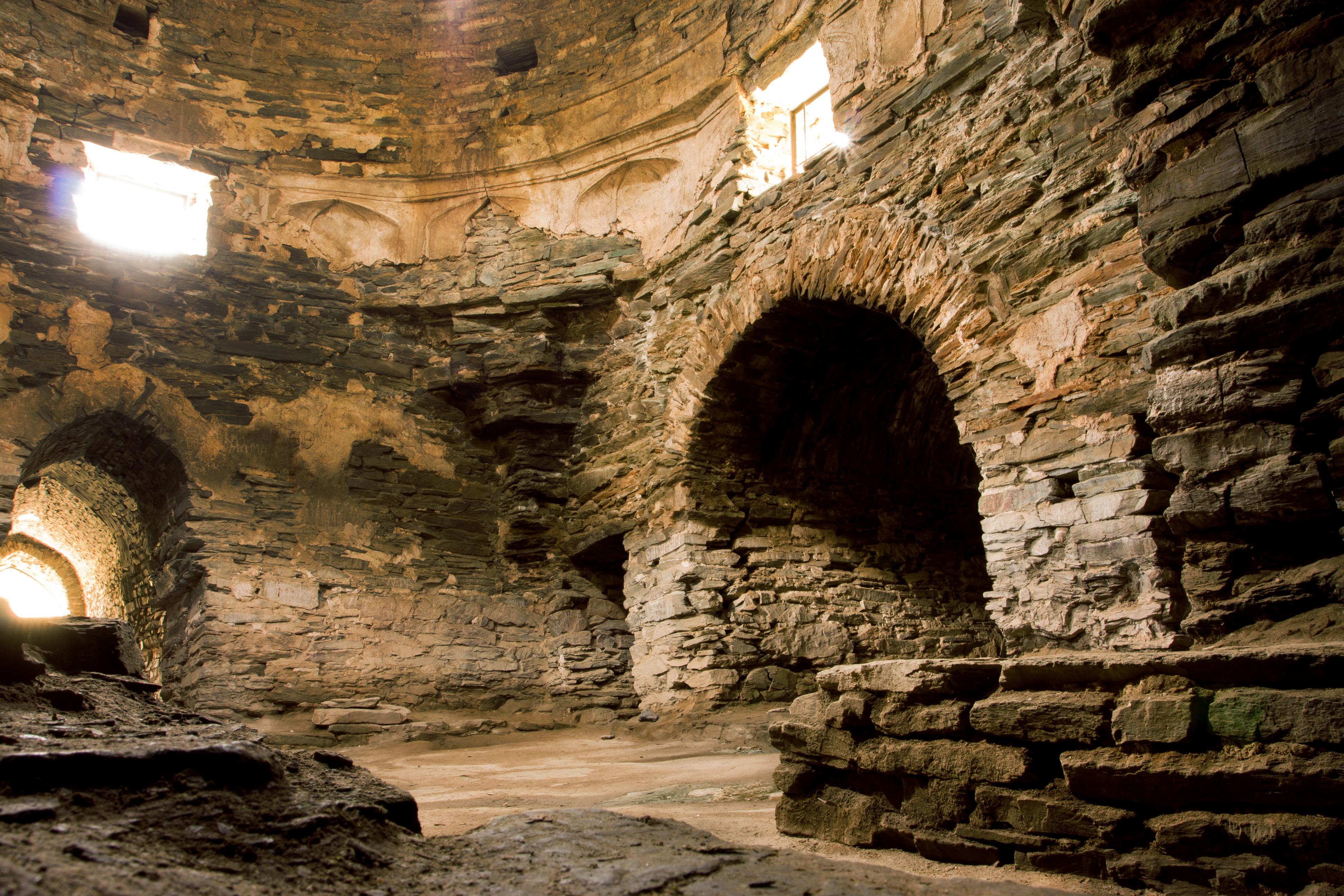
Days 8-9: Osh, Sary Tash, Murghab (Tajikistan)
From Bishkek fly to Kyrgystan’s second-largest city, Osh, located in the lush Fergana Valley, and browse its lively 2,000-year-old Jayma Bazaar, one of Central Asia’s largest open-air markets. Then depart on the stunning drive along the Pamir Highway. Spend the night in little Sary Tash, and then cross into Tajikistan, continuing the climb by 4WD vehicle over dramatic 14,050-foot Kyzyl Art Pass and settling in for the night in the town of Murghab. This is truly one of the world’s great mountain drives, with stunning scenery at every turn.
HIGHLIGHTS
- The sensory overload of Osh’s fabulous Jayma Bazaar
- A Kyrgyz bread baking demonstration in Osh
- The breathtaking scenery of the Pamir Highway at 14,050-foot Kyzyl-Art Pass
- Picnicking at high-altitude Karakul Lake, created by a meteor 10 million years ago
- Murghab, the highest town in Tajikistan, with views into China
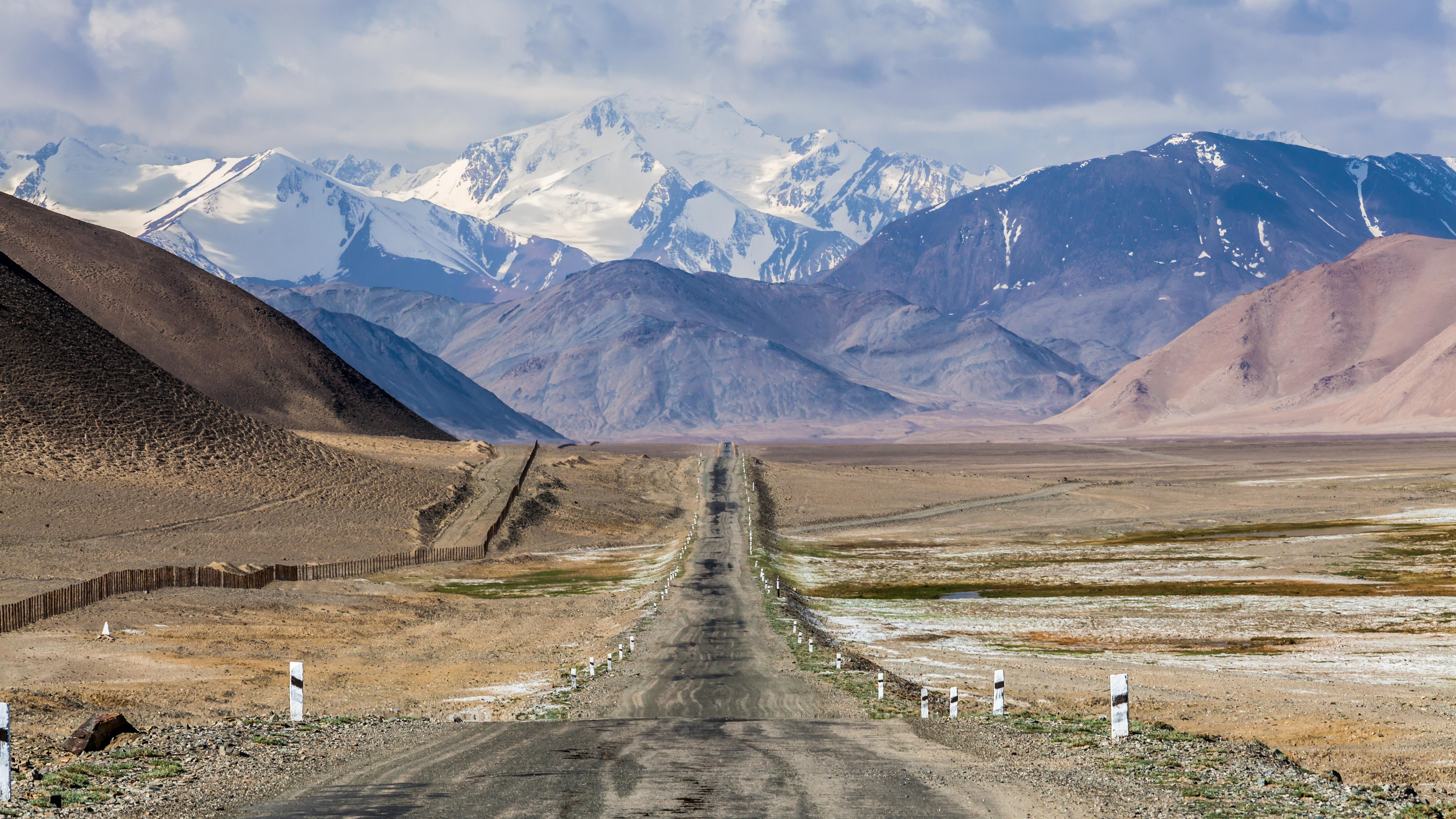
Days 10-13: Langar, Wakhan Corridor, Khorog
After crossing the Khargush Pass, the descent into the Wakhan Valley provides possible sightings of migrating nomads, Bactrian camels, and orange marmots – all with Afghanistan’s Hindu Kush Mountains as a backdrop. Follow traces of the old Silk Road through the Wakhan Corridor to the town of Khorog, a path that provides its own spectacular views, flanked by the Pamirs on one side and the Hindu Kush on the other. A day in Khorog provides a break from driving and multiple opportunities to experience the local culture.
HIGHLIGHTS
- More amazing mountain vistas
- Stops along the Wakhan Corridor to visit hot springs, Buddhist stupas, Ismaili shrines, and ruined forts
- Khorog’s park-like botanical gardens, among the world’s highest at an elevation of 7,600 feet
- A visit to a Khorog school, with the chance to help local children practice their English
- Sitting in on an evening prayer service at a jamaatkhana, a community prayer house for Ismaili Muslims
- Lunch with a representative from a local NGO who shares experiences living and working in Tajikistan
- Meeting artisans at the Pamiri Handicrafts Center
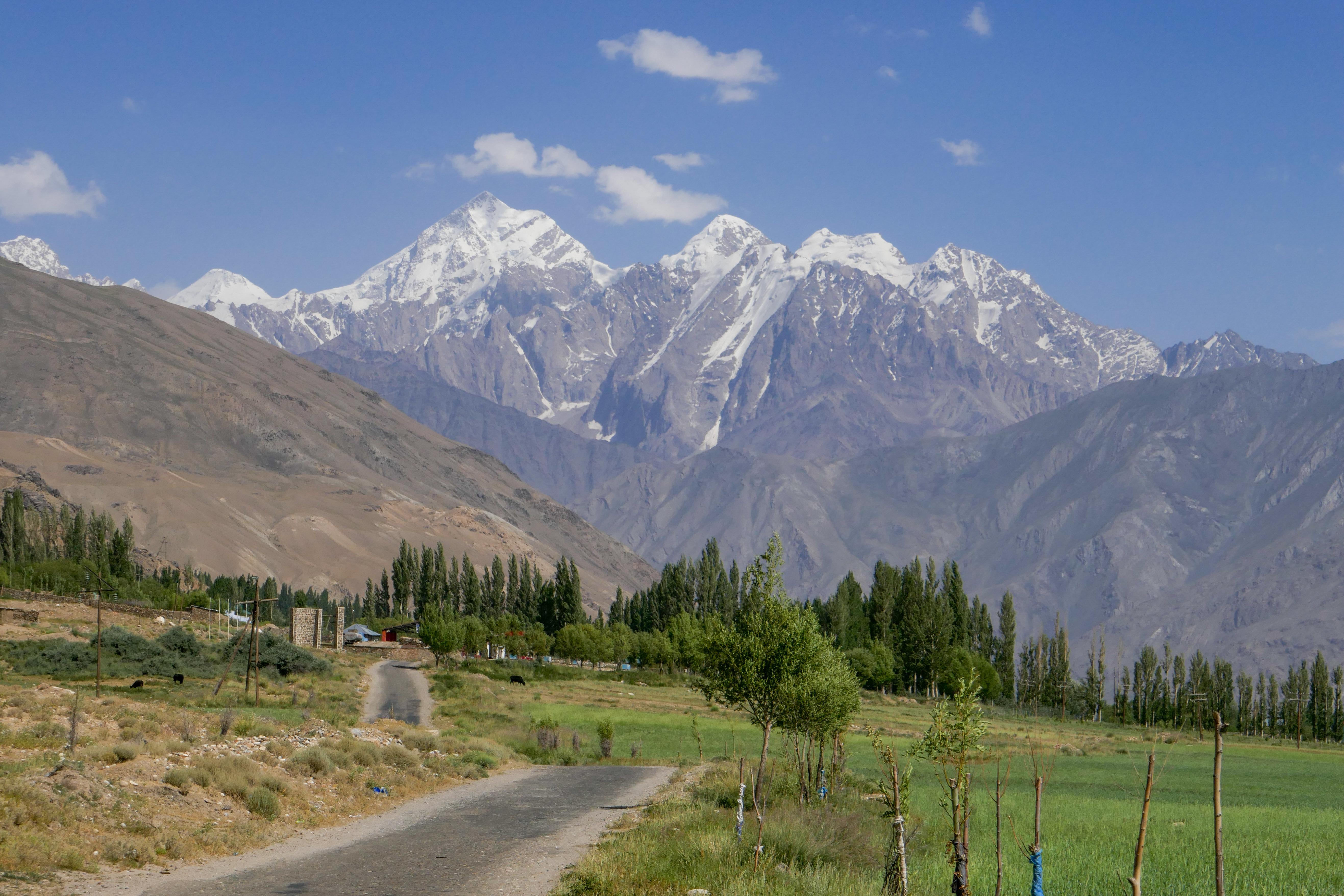
Days 14-18: Kalaikhumb, Dushanbe
Follow the Afghan border to the sleepy mountain village of Kalaikhumb in the Gorno-Badakhshan Autonomous Region. This isolated area, accessible only by the Pamir Highway, is spiked with 20,000-foot peaks, earning it the nickname Roof of the World. Descend to Dushanbe, the capital of Tajikistan, where two days of touring include the lively Shohmansur Bazaar; the large, modern National Museum of Tajikistan; the small but fascinating Gurminj Museum of Musical Instruments; and, outside of town, the 18th century Hissar Fortress.
HIGHLIGHTS
- Gazing at “the Roof of the World” from the isolated village of Kalaikhumb
- Dushanbe’s covered Shohmansur Bazaar, which exemplifies the city’s traditional role as a market town
- Exuberant demonstrations frequently performed at the Gurminj Museum of Musical Instruments
- The imposing towers of Hissar Fortress

This itinerary was developed in collaboration with MIR Corporation as a capacity building initiative as part of the Silk Road World Heritage Journeys project.

